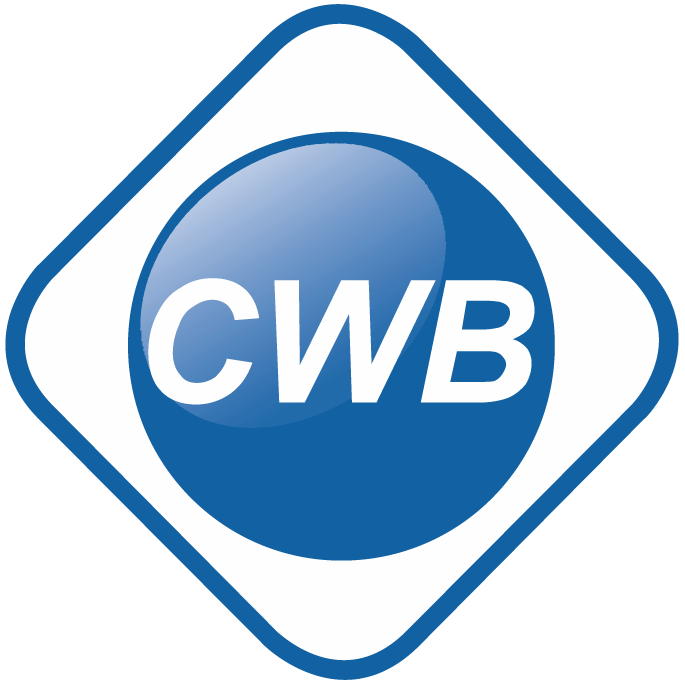Roger Turgeon had always been a skilled manual worker and was working for his brother, Édouard, mainly as carpenter, but also as plasterer, joint pointer and painter. Of an ambitious nature, Roger decided in 1966 to start his own construction venture. His first contracting job was the extension of the Jolin Hotel situated in the village of Saint-Léon-de-Standon.
Roger Turgeon had always been a skilled manual worker and was working for his brother, Édouard, mainly as carpenter, but also as plasterer, joint pointer and painter. Of an ambitious nature, Roger decided in 1966 to start his own construction venture. His first contracting job was the extension of the Jolin Hotel situated in the village of Saint-Léon-de-Standon.
Construction Roger Turgeon Inc. was constituted on June 28, 1977 and it was a milestone for the small enterprise of Saint-Anselme. The years 1977-1980 proved very good for the company, which soon boasted 40 employees. Roger’s eldest son, Denis, a civil engineering graduate from Laval University joined its ranks and was acting as superintendent in the absence of his father.
Construction Roger Turgeon Inc. was constituted on June 28, 1977 and it was a milestone for the small enterprise of Saint-Anselme. The years 1977-1980 proved very good for the company, which soon boasted 40 employees. Roger’s eldest son, Denis, a civil engineering graduate from Laval University joined its ranks and was acting as superintendent in the absence of his father.
At 52 years old, Roger Turgeon offered to sell to his sons, Denis and Gaétan, who, both in their early twenties, showed courage in deciding to take the plunge despite an unfavourable economic conjuncture at the time in the construction industry. This decision proved momentous and accelerated the company's growth, starting with their first project for an HLM (Low rent housing) in L’Islet, QC.
At 52 years old, Roger Turgeon offered to sell to his sons, Denis and Gaétan, who, both in their early twenties, showed courage in deciding to take the plunge despite an unfavourable economic conjuncture at the time in the construction industry. This decision proved momentous and accelerated the company's growth, starting with their first project for an HLM (Low rent housing) in L’Islet, QC.
With $10M in revenues and despite major growth since the brothers had taken over, Construction Roger Turgeon Inc. remained a relatively small sized business with limited expansion possibilities due to its specialization in concrete. Now at the helm of the company, the eager Denis sees much potential in earthwork, an added service that would allow the company to undertake bigger and more complex works such as aeration ponds. Denis has been yearning for such an expansion for years. After careful consideration, he decides to reach for his dream and acquires Côté Excavations Inc. in Saint-David-de-l’Auberivière (Suburb of Lévis, QC)
With $10M in revenues and despite major growth since the brothers had taken over, Construction Roger Turgeon Inc. remained a relatively small sized business with limited expansion possibilities due to its specialization in concrete. Now at the helm of the company, the eager Denis sees much potential in earthwork, an added service that would allow the company to undertake bigger and more complex works such as aeration ponds. Denis has been yearning for such an expansion for years. After careful consideration, he decides to reach for his dream and acquires Côté Excavations Inc. in Saint-David-de-l’Auberivière (Suburb of Lévis, QC)
In the spring of 1989, the company moves from the village of St-Anselme to Archimède Street in Lévis near the Trans-Canada Highway.
In the spring of 1989, the company moves from the village of St-Anselme to Archimède Street in Lévis near the Trans-Canada Highway.
Under a new name, Côté & CRT, the company secures its biggest contract ever, $11M, and is commissioned by Canada Port Authorities to build four storing silos for raw materials and a hangar to house all of the machinery for the Pointe-Noire site of aluminium smelter Alouette at the mouth of Sept-Îles Bay. Two voluminous silos, 60 meters high with a 30-meter diameter, are meant for alumina while the two smaller ones, 45 meters high for a diameter of 18 meters, hold calcined coke.
All four silos are made of post-tensioned concrete with armatures which is 50% cheaper compared to the commonly used reinforced concrete. Steel cables brace the structures with cylinders for tension, a complex technique normally reserved for bigger works such as bridges. Lastly, the steel roofs, constructed at ground level, are hoisted by gigantic cranes.
Under a new name, Côté & CRT, the company secures its biggest contract ever, $11M, and is commissioned by Canada Port Authorities to build four storing silos for raw materials and a hangar to house all of the machinery for the Pointe-Noire site of aluminium smelter Alouette at the mouth of Sept-Îles Bay. Two voluminous silos, 60 meters high with a 30-meter diameter, are meant for alumina while the two smaller ones, 45 meters high for a diameter of 18 meters, hold calcined coke.
All four silos are made of post-tensioned concrete with armatures which is 50% cheaper compared to the commonly used reinforced concrete. Steel cables brace the structures with cylinders for tension, a complex technique normally reserved for bigger works such as bridges. Lastly, the steel roofs, constructed at ground level, are hoisted by gigantic cranes.
The acquisition of Côté Excavations Inc. brings to the company a large machinery park along with teams of operators and mechanics that will allow it to bid on larger scale projects that involve both earthwork as well as concreting. In the short term, the addition of the subsidiary's assets for earthwork and excavation work will more than double the revenues of the new entity to be called Côté & CRT Inc. in 1991.
Event1991 Text

Côté & CRT Inc. opens a new office in Boucherville on the south shore of Montreal to better position itself for projects in the Montreal metropolitan area and in western Quebec. Even if most projects have up until now, been located in the eastern part of the province, all major ones have come from western Québec and Ontario.
Côté & CRT Inc. opens a new office in Boucherville on the south shore of Montreal to better position itself for projects in the Montreal metropolitan area and in western Quebec. Even if most projects have up until now, been located in the eastern part of the province, all major ones have come from western Québec and Ontario.
As the company is hired to repair underwater valve guides cast into concrete at the old hydroelectric Beauharnois power station, it buys out Poly-Hydro, an established firm with a fully qualified team of divers, specialized in underwater works (welding, demolition, formwork, injection, structure assembly). Following the purchase, the company changes its name to Groupe CRT Inc. in 1996 in order to consolidate its three divisions and to smooth the path for obtaining large-scale works contracts.
As the company is hired to repair underwater valve guides cast into concrete at the old hydroelectric Beauharnois power station, it buys out Poly-Hydro, an established firm with a fully qualified team of divers, specialized in underwater works (welding, demolition, formwork, injection, structure assembly). Following the purchase, the company changes its name to Groupe CRT Inc. in 1996 in order to consolidate its three divisions and to smooth the path for obtaining large-scale works contracts.
In 2006, a new Head Office is built while the garage and the warehouses including shipping facilities are expanded and modernized. The company will continue to invest during the six next years by adding a welding shop, new warehouses, a paint shop, another carpentry shop and a hangar for helicopters. Overhead cranes are also added in the garage and in both welding and carpentry shops to make operations more efficient.
In 2006, a new Head Office is built while the garage and the warehouses including shipping facilities are expanded and modernized. The company will continue to invest during the six next years by adding a welding shop, new warehouses, a paint shop, another carpentry shop and a hangar for helicopters. Overhead cranes are also added in the garage and in both welding and carpentry shops to make operations more efficient.
The first large-scale project, worth $52M, is commissioned to the CRT-Hamel joint venture for the building of 23 earth dikes, the excavating of two channels and the erection of a temporary bridge on the Nemiscau River. The experience and the expertise gained over the years reassure clients as to the company’s reliability for big scale works. A team of 150 men working on two shifts was deployed on the grounds supported by an on-site technical/supervision team of about 15 (engineers, technicians, superintendents, foremen and administrative staff).
The first large-scale project, worth $52M, is commissioned to the CRT-Hamel joint venture for the building of 23 earth dikes, the excavating of two channels and the erection of a temporary bridge on the Nemiscau River. The experience and the expertise gained over the years reassure clients as to the company’s reliability for big scale works. A team of 150 men working on two shifts was deployed on the grounds supported by an on-site technical/supervision team of about 15 (engineers, technicians, superintendents, foremen and administrative staff).
Winning the contract for casting the concrete of the Sarcelle power plant was a major achievement for the company and perhaps even more so for its president who saw it as a recognition for a lot of hard work. It was a long-awaited moment. The joint-venture got the coveted contract evaluated at more than $88M with a difference of less than 1% from the closest bidder. The project team was assembled in March 2009, the work started on April 8 and the first casting was on April 25, all memorable dates for the company.
Winning the contract for casting the concrete of the Sarcelle power plant was a major achievement for the company and perhaps even more so for its president who saw it as a recognition for a lot of hard work. It was a long-awaited moment. The joint-venture got the coveted contract evaluated at more than $88M with a difference of less than 1% from the closest bidder. The project team was assembled in March 2009, the work started on April 8 and the first casting was on April 25, all memorable dates for the company.
At $80M, the first project at Kwoiek Creek in British Columbia was the biggest CRT Construction Inc. had ever gotten on its own. The team needed to deal with the complexity of the terrain in the Rockies while adjusting to a new work environment.
During development, a 40 km road had been planned to access the site but, following a misunderstanding with an Indian reservation on whom’s territory the road ran, the installation of a rope traction elevator (cable car) with a capacity of 20 tons over 750m proved necessary. CRT Construction Inc. and its subcontractors had both the expertise and the experience required in such situations to adapt, deal with pitfalls and deliver the plant on time.
At $80M, the first project at Kwoiek Creek in British Columbia was the biggest CRT Construction Inc. had ever gotten on its own. The team needed to deal with the complexity of the terrain in the Rockies while adjusting to a new work environment.
During development, a 40 km road had been planned to access the site but, following a misunderstanding with an Indian reservation on whom’s territory the road ran, the installation of a rope traction elevator (cable car) with a capacity of 20 tons over 750m proved necessary. CRT Construction Inc. and its subcontractors had both the expertise and the experience required in such situations to adapt, deal with pitfalls and deliver the plant on time.
After three projects at the James Bay, CRT Construction Inc. and their partner Hamel Construction inc. had their sights on the La Romaine Complex. They were first commissioned to build an 18 km road between the Romaine 2 and Romaine 3 worksites during the Fall of 2012. After four projects at La Romaine, Hamel-CRT got in 2014 the most important contract of civil engineering ever commissioned for the La Romaine Complex: the construction of a dike and of the Romaine 3 main dam.
After three projects at the James Bay, CRT Construction Inc. and their partner Hamel Construction inc. had their sights on the La Romaine Complex. They were first commissioned to build an 18 km road between the Romaine 2 and Romaine 3 worksites during the Fall of 2012. After four projects at La Romaine, Hamel-CRT got in 2014 the most important contract of civil engineering ever commissioned for the La Romaine Complex: the construction of a dike and of the Romaine 3 main dam.
In August 2013, Denis Turgeon announced the signature of an agreement with Innergex for the realization of the Upper Lillooet (81.4 MW) and Boulder Creek (25.3 MW) projects, a $250M undertaking with EBC Inc. The joint venture is commissioned to design and build two power plants including two tunnels of more than 5 km long, two water intakes and other related works.
In the Spring of 2014, CRT-EBC also received from Innergex a new contract for a run-of-the-river facility, the Big Silver Creek plant near Harrison Hot Springs including a 40.6 MW power plant, a 2 km tunnel feed and a 1.5 km penstock, all for $97M.
In August 2013, Denis Turgeon announced the signature of an agreement with Innergex for the realization of the Upper Lillooet (81.4 MW) and Boulder Creek (25.3 MW) projects, a $250M undertaking with EBC Inc. The joint venture is commissioned to design and build two power plants including two tunnels of more than 5 km long, two water intakes and other related works.
In the Spring of 2014, CRT-EBC also received from Innergex a new contract for a run-of-the-river facility, the Big Silver Creek plant near Harrison Hot Springs including a 40.6 MW power plant, a 2 km tunnel feed and a 1.5 km penstock, all for $97M.
In 2015, CRT Construction was contracted to build four 64-metre high silos and one tunnel on the huge construction site of the McInnis Cement plant in Port-Daniel. The silos were built using the slipform machine method. This technique had last been used by CRT in 2003 for the Alouette aluminium smelter in Sept-Îles, more than a decade before CRT could once again prove its expertise with this more complex type of formwork.
Between 2015 and 2019, CRT has obtained 2 more contracts for construction projects requiring gliding formwork, which means the last 8 concrete silos built in Québec since 2003 were all CRT's projects.
In 2015, CRT Construction was contracted to build four 64-metre high silos and one tunnel on the huge construction site of the McInnis Cement plant in Port-Daniel. The silos were built using the slipform machine method. This technique had last been used by CRT in 2003 for the Alouette aluminium smelter in Sept-Îles, more than a decade before CRT could once again prove its expertise with this more complex type of formwork.
Between 2015 and 2019, CRT has obtained 2 more contracts for construction projects requiring gliding formwork, which means the last 8 concrete silos built in Québec since 2003 were all CRT's projects.
The nature of our projects often located on remote sites with limited access has led us to make major investments in transportation in order to maximize the efficiency of our operations. We gradually acquired an Astar 350 B2 helicopter carrying 5 passengers, a Pilatus PC12 plane equipped to carry 11 passengers including two crew members and finally, a 2500 HP tugboat with 7 rooms for the crew. These investments have significantly improve our travel management while providing easier transportation of goods and equipment on locations where there is simply no other transportation modes available.
All this equipment allows us to be completely self-sufficient in planning and managing the logistics of our operations, which is crucial to the success of our company. It also allows us to optimize our workers' time and the efficiency of our operations. The plane has become a major asset in achieving better work/personal life balance for our workers who can fully enjoy their free time, something our company cares a great deal about.
The nature of our projects often located on remote sites with limited access has led us to make major investments in transportation in order to maximize the efficiency of our operations. We gradually acquired an Astar 350 B2 helicopter carrying 5 passengers, a Pilatus PC12 plane equipped to carry 11 passengers including two crew members and finally, a 2500 HP tugboat with 7 rooms for the crew. These investments have significantly improve our travel management while providing easier transportation of goods and equipment on locations where there is simply no other transportation modes available.
All this equipment allows us to be completely self-sufficient in planning and managing the logistics of our operations, which is crucial to the success of our company. It also allows us to optimize our workers' time and the efficiency of our operations. The plane has become a major asset in achieving better work/personal life balance for our workers who can fully enjoy their free time, something our company cares a great deal about.



870, archimède Street, levis (quebec) G6V 7M5
phone: 418.833.8073 fax: 418.833.9629
RBQ: 2737-4404-42
levis@crtconstruction.ca



Copyright © 2006-2025 CRT CONSTRUCTION · All rights reserved Usage / legal documents
